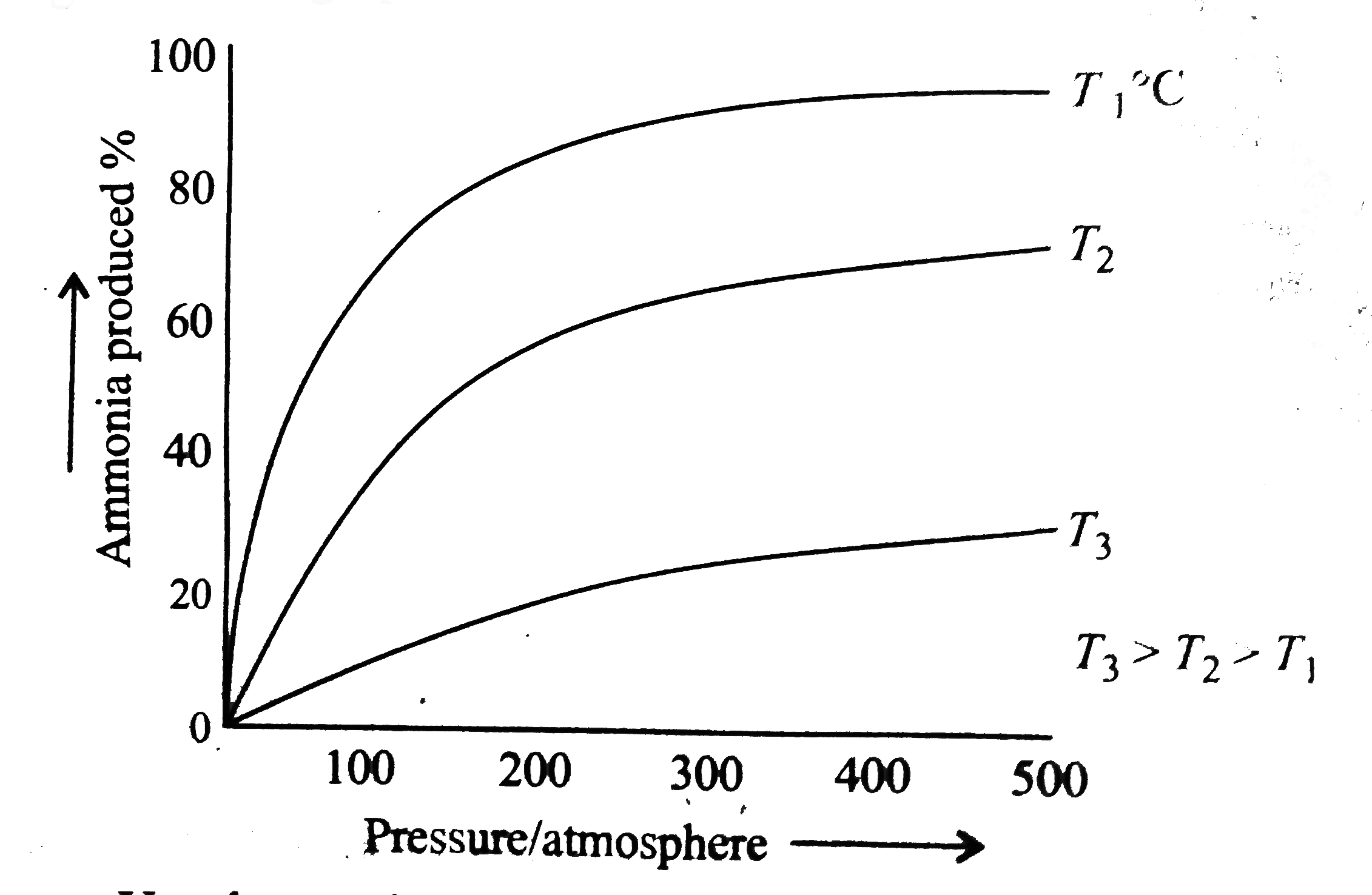Nitrogen and hydrogen combine to form ammonia under high temperature and pressure conditions. This is an example of
(a) biological fixation
(b) natural fixation
(c) industrial fixation
(d) electrical fixation
The correct Answer is:C
Step-by-Step Solution:
1. Identify the Reactants and Products: The question states that nitrogen (N₂) and hydrogen (H₂) combine to form ammonia (NH₃).
2. Understand the Conditions: The process occurs under high temperature and high pressure conditions. This is a crucial detail as it helps to differentiate between types of nitrogen fixation.
3. Recall Types of Nitrogen Fixation: There are different types of nitrogen fixation:
- Biological nitrogen fixation (occurs in living organisms, often involving bacteria)
- Natural nitrogen fixation (occurs through natural processes like lightning)
- Industrial nitrogen fixation (occurs in industrial settings, typically involving the Haber process)
- Electrical nitrogen fixation (not a commonly recognized category)
4. Match the Process with the Correct Type: Given that the process involves high temperature and pressure to combine nitrogen and hydrogen to produce ammonia, it aligns with the industrial nitrogen fixation process, specifically the Haber process.
5. Conclude the Answer: Therefore, the correct answer to the question is that the combination of nitrogen and hydrogen to form ammonia under high temperature and pressure conditions is an example of industrial nitrogen fixation.
Final Statement: Hence, nitrogen and hydrogen combine to form ammonia under high temperature and pressure conditions in industrial nitrogen fixation. The correct answer is option C: industrial nitrogen fixation.
---
- Biological nitrogen fixation (occurs in living organisms, often involving bacteria)
- Natural nitrogen fixation (occurs through natural processes like lightning)
- Industrial nitrogen fixation (occurs in industrial settings, typically involving the Haber process)
- Electrical nitrogen fixation (not a commonly recognized category)
Topper's Solved these Questions
- MINERAL NUTRITIONBook:NCERT FINGERTPS ENGLISHChapter:MINERAL NUTRITIONExercise:Assertion & Reason
Explore 15 Videos
- MINERAL NUTRITIONBook:NCERT FINGERTPS ENGLISHChapter:MINERAL NUTRITIONExercise:Mineral Nutrition
Explore 130 Videos
- LOCOMOTION AND MOVEMENTBook:NCERT FINGERTPS ENGLISHChapter:LOCOMOTION AND MOVEMENTExercise:Locomotion And Movement
Explore 139 Videos
- MORPHOLOGY OF FLOWERING PLANTSBook:NCERT FINGERTPS ENGLISHChapter:MORPHOLOGY OF FLOWERING PLANTSExercise:Morphology Of Flowering Plants
Explore 135 Videos
Similar Questions
Knowledge Check
Alkenes combine with carbon monoxide and hydrogen in presence of octacarbonyldicobalt as catalyst under high temperature and pressure to form
Aaldehydes which can be further reduced to alcohols by hydrogenBalkanes which are formed by addition of hydrogenCalcohols formed byb reaction CO and hydrogenDKetones which can be further reduced to aldehydes by hydrogen.
The persentage of ammonia produced from nitrogen and hydrogen under conditions of temperature and pressure is given in the graph

Use the graph answering the following questions:
What conditions of pressure produce the highest percentage of ammonia?
View SolutionThe persentage of ammonia produced from nitrogen and hydrogen under conditions of temperature and pressure is given in the graph

Use the graph answering the following questions:
What happens to the percentage of ammonia produced when the pressure is increased?
View SolutionThe persentage of ammonia produced from nitrogen and hydrogen under conditions of temperature and pressure is given in the graph

Use the graph answering the following questions:
What happens to the percentage of ammonia produced when the temperature is increased
View SolutionFormation of coal from matter under the earth at high temperature and pressure in the absence of oxygen over millions of years.
View SolutionAt high temperature, nitrogenn directly combines with
View SolutionAmmonia reacts with hydrogen chloride to form
View SolutionDiethyl ether is prepared by passing vapours of ethyl bromide over heated catalyst under high temperature and pressure. The catalyst is :
View Solution

